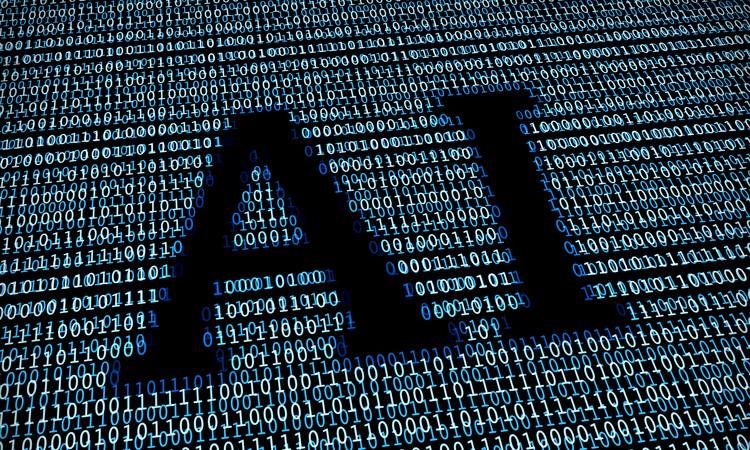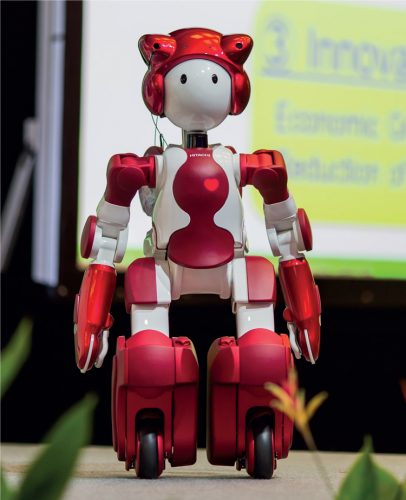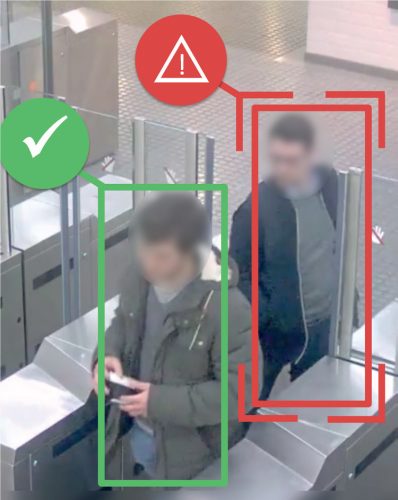Artificial intelligence in rail: Hype or reality?
Posted: 15 May 2019 | Gayang Ho - UITP | No comments yet
Is artificial intelligence (AI) all hype, or does it mean the rail industry needs to act now to recognise, rethink and reorganise itself to embrace the advent of transformational technology? Gayang Ho, Research and Policy Development Lead at the UITP Asia-Pacific Centre for Transport Excellence (AP CTE), explores.


The pace of technology advancements is rapidly accelerating. According to the European Network on High Performance and Embedded Architecture and Compilation (HiPEC), the society is entering the artificial intelligence (AI) era, driven by the Fourth Industrial Revolution, where computers are taking on new forms and embedding into people’s daily lives. Data is shifting from letters and digits to sounds, images and videos. The problem of data deluge – there is more data available than we can process – is more evident than ever before. The use of AI in public transport appears to be one of the critical solutions that efficiently unlocks the value of data to improve the quality and efficiency for the public transport sector, especially in railways. But is AI just a ‘buzzword’, or does the industry need to develop further to embrace these transformational technologies?
Each revolution has transformed the landscape of the railway industry. The Fourth Industrial Revolution fosters the growth of seamless automation and endless connectivity; characterised by merging physical and digital advanced technologies. The advances in digital technologies such as AI, big data analytics, Internet of Things (IoT) and blockchain, bring the concept of seamless mobility and efficient interconnectivity to a reality.
The growing importance of AI


Figure 1: The JRE Communication Robot, EMIEW
In 2018, there were numerous reports published estimating that AI will bring substantial economic growth and improvement in productivity; a survey from Economic Intelligent Unit (conducted in late-2016) found that 44 per cent of executives said delaying AI implementation will make their business vulnerable to new, disruptive tech start-ups. This is not surprising when we look at the global race with governments attempting to claim the title ‘leader in artificial intelligence’ along their announcements on AI-centred public policies and action plans backed up with substantial funding.
The focus given to AI is without a doubt causing many industries to ride the AI adoption wave. The levels of investment and impact of AI vary across industries, with financial services estimated to have the highest increase in AI spending as well as the ability to adopt the technology into its core operations in the next three years (McKinsey, 2017). The substantial evidence of the growing importance of AI has encouraged the International Association of Public Transport (UITP) to investigate ‘What is the future for artificial intelligence in public transport systems?’ The project undertaken by UITP Asia-Pacific Centre for Transport Excellence (AP CTE1), co-funded with Land Transport Authority of Singapore, found that AI is increasingly being adopted by the public transport sector.
During the quest of understanding the impact of AI, there is no universally accepted definition of ‘artificial intelligence’; the definition of AI is a moving target because the meaning of ‘intelligence’ is arbitrary. From the 1950s, when the term ‘artificial intelligence’ was first coined by Alan Turing, AI was considered to be the machine’s ability to disguise itself as a human response via text-only format setting; to 1989 where the early version of the autonomous vehicle, ALVINN (An Autonomous Land Vehicle in a Neural Network) was introduced to drive autonomously at one metre per second (3.6kph) due to the limited amount of computing power that could be fitted in the vehicle. Then fast forward to present day, the recent ground-breaking AlphaGo Zero, a self-learning computer programme for the game Go, using deep-learning neuron networks to defeat previous versions of AlphaGo (who beat the world 18-time champion) which is arguably the best Go player in history. Thanks to increasing computer processing powers, AI systems today can instantaneously analyse large amounts of data and interact in real time. This presents many opportunities to the public transport and railway sectors.
The current state of play
AI is still considered to be in its infancy stage, but it is gaining traction in the public transport sector. An online survey conducted by UITP AP CTE in early-2018 (answered by 48 public transport organisations), highlighted that 62 per cent of organisations were either using or considering AI-powered solutions. Together with the 17 use-cases collected, UITP found they all had a common philosophy – use of AI technologies is not primarily to reduce or replace staff but to improve the quality and efficiency of tasks undertaken by employees – this overwrites the myth that AI will take over the future workforce.
AI will greatly impact customer service
Our analysis found that AI has the biggest impact in improving customer service-related KPIs. Commuters are ultimately the beneficiary of any innovative projects that improve efficiencies and safety of public transport systems. East Japan Railway Company (JR East), MTR Corporation and Transport for London (TfL) are some of the world’s highest patronage metro networks, each facilitating millions of trips per day and are using AI-powered digital assistants to better manage over tens of thousands of customer inquiries per day. MTR and TfL have launched chatbots on social network services, while JR East has taken the step further to use chatbots as well as AI systems integrated in customer call-centre systems and humanoid robots (see Figure 1) at high-traffic stations. Digital assistants can simply answer customer inquiries instantaneously and effectively (provided the database has built high-quality data inputs and on-going monitoring management is in place) which will relieve customer staff to handle more complex and value-added tasks.
AI can help to optimise complex railway systems


Figure 2: Simulation of tailgating passenger
Mobility demand patterns are dynamically changing as urban populations continue to grow and a rising number of variables are impacting mobility behaviours. The increasing pressure points in urban railway systems can be easily thrown into chaos when service disruptions occur. Furthermore, the progression of digitalisation and sharing economy is shifting passengers’ expectations from traditionally fixed schedules to expecting public transport services to follow the trend of being agile, on demand and informative. For urban railway operators to compete in today’s increasingly demanding market, some are looking into innovative solutions such as the use of AI systems to predict mobility demand and the better management of trains.
Tokyo’s Railways Technical Research Institute (RTRI) and the Swiss Federal Railways (SBB) are researching the use of neural network and deep reinforcement learning (AI applications) to combat train delays and optimise train scheduling in their respective complex and dense railway networks. The AI systems allow operators to shorten decision times, provide adequate information to passengers and train dispatchers, and optimise train scheduling (in SBB’s case). On the demand side, Siemens partnered with BVG and VBB to deploy a Mobility Data Analytics System in Berlin which dynamically predicts mobility demand based on data from a journey planner app (HaCon) and aims to develop transfer learning to derive insights in areas where no live data is available.
AI-powered video analytics are effective in improving the safety and security of urban railway networks
Public transport networks around the world are widely covered by video surveillance, especially railways. According to the UITP’s Statistics Brief on Video Surveillance, the number of cameras across public transport networks increased by 70 per cent between 2015 and 2018. Technavio expects the global AI-powered video analytics market to grow at a CAGR of 41.76 per cent during the period 2018-20222.
AI-powered video analytics is considered to play a significant role in improving capabilities of railways’ predictive maintenance regimes (or condition-based maintenance) and security management. Another project of the RTRI is its automatic tunnel lining crack detection using a multi-layer neural network (deep learning) along with the use of a statistics optimisation model. This project aims to greatly improve the maintenance teams’ efficiency and safety. Another use of AI-powered video analytics to improve operational staff ’s efficiency and security management is AWAAIT Artificial Intelligence S.L. partnered with Ferrocarrils de la Generalitat (FGC) to combat fare evasion issues by using the automatic real-time analytics system to detect suspicious fraudulent behaviours at ticket gates and send alerts to help inspectors perform selective controls (see Figure 2).
The future of AI in railways
It is clear AI systems can be powerful and can solve the critical challenges that railways are facing today. Experts recruited for the study came up with future concepts of AI-driven solutions that can revolutionise the industry such as ‘smart stations’ where its facilities and services will be dynamically managed with real-time optimisation according to passenger flow, and ‘Real-Time Customer Sentiment Tracking’ through AI-powered video analytics.
However, AI is no silver bullet and faces limitations like any other technology. Data is the foundation of all AI systems – quality, quantity, integrity and legality are important factors. There is an important role for humans to play in maximising the opportunities AI solutions promise. UITP’s 144-page report Artificial Intelligence in Mass Public Transport provides in-depth descriptions of AI use-cases in public transport, detailed guidelines on key building blocks of AI and solutions to overcome the common challenges of AI projects, as well as an overview of the potentials of AI when combined with other technologies such as IoT and blockchain.
DID YOU KNOW…
In 2015 alone, it is estimated that 243 billion public transport journeys were made in 39 countries around the world3. In 2016, during a four-week trial analysing Wi-Fi data on the London Underground, Transport for London (TfL) collected data from over 500 million connection requests made on 5.6 million mobile devices, constructing 42 million journeys4. In Hong Kong, Thales is decoding over 10 million data points every day from railway passengers with over five million trips made on MTR Corporation’s metro network5.
References:
- www.uitp.org/asia-pacifi c
- ‘Global AI-powered Video Analytics Market 2018-2022 – Growing Demand for Data Integration and Visual Analytics’, Business Wire Press Release, 22 June 2018 www.businesswire.com/news/ home/20180622005456/en/Global-AI-powered-Video-AnalyticsM arket-2018-2022–
- UITP, ‘Urban Public Transport in the 21st Century’, Statistics Brief, October 2017.
- ‘Pilot shows how Wi-Fi data can improve Tube journeys’. Transport for London Press Release, 8 September 2017, www.tfl .gov.uk/info-for/media/ press-releases/2017/september/ pilot-shows-how-wifi -data-canimprove- tube-journe
- ‘Thales Mines ‘Data Lake’ Treasure for Hong Kong Mass Transit’. Thales, 3 February 2018 www.thalesgroup.com/ en/worldwide/transportation/ magazine/thales-minesdata- lake-treasurehong- kong-mass-transit
Biography


Issue
Related topics
Digitalisation, Infrastructure Developments, Internet of Things (IoT), Technology & Software








